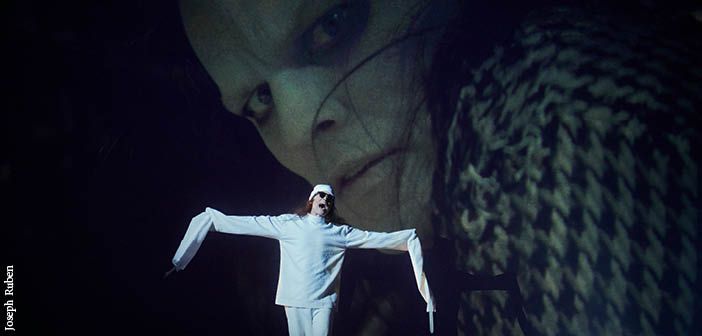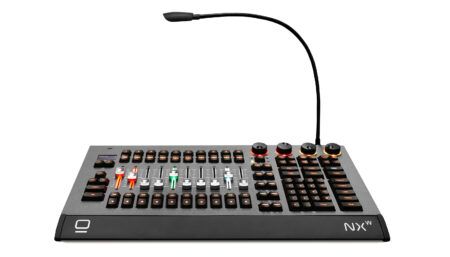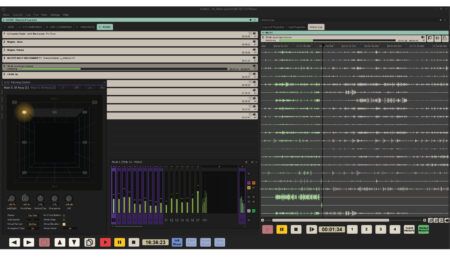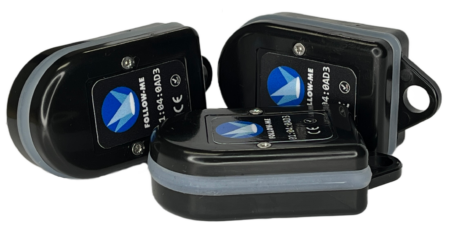The musical theatre extravaganza The Black Rider: The Casting of the Magic Bullets debuted in 1990, combining the talents of director Robert Wilson, writer William S. Burroughs and musician Tom Waits. Now a new production by The Theater Bielefeld in Germany, is set to premiere on 12 September 2020, under the guidance of Michael Heicks, with musical direction by William Ward Murta. This latest production will use cutting-edge AV technology to bring Sascha Vredenburg’s video content to life on stage.
Of course, the theatre has had to develop a health and safety plan to enable rehearsals to continue in the COVID-19 era. It has added a number of measures on top of government regulations, including developing an audio setup that allows for its own orchestra to play live music whilst being physically present in a different part of the premises, a few hundred metres away from the actual stage. On a smaller scale, changes to the pre-COVID-19 mode of operations also include individually allocated battery boxes to minimise the necessary physical contact between cast and technicians.
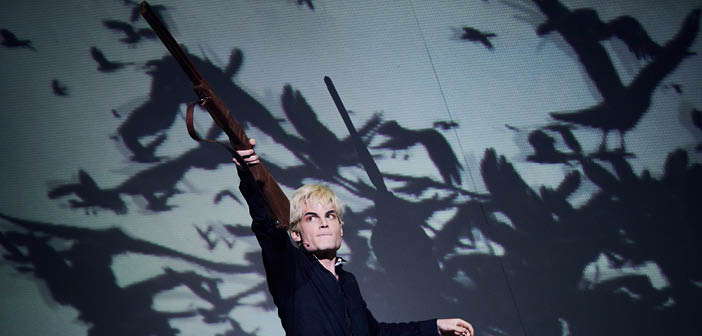
The play is loosely based on the German Freischütz legend, revolving around a pact with the devil. The ways in which this archetypal theme relates to modern individuals and notions of addiction is made apparent in a highly entertaining way, with lots of dark humour added for good measure.
Five large projection surfaces act as the visual centrepieces of the stage design created by Heicks. A Digital Projection Titan Laser 33000 4K-UHD projector is used for displaying the video content on said surfaces. Three of the projection surfaces (which measure 12.62 x 11m, 10.73 x 6,68m and 8,21 x 10,47m) move on stage independently of one another, while the video content is projected on to them. Through the movement of the surfaces, the position and angle in relation to the 4K projector constantly changes in real time. One of the surfaces is tilted so much during the play, that its reverse side also acts as a projection surface. This 180° turn is executed as a seamless interplay between the projection and the screen surface without any additional show programming.
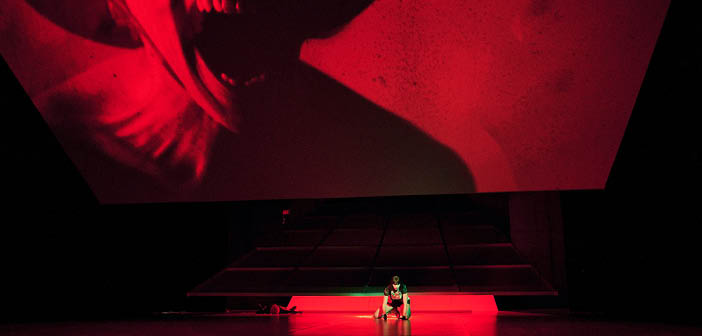
“Looking at the requirements we quickly realised that a standard show programming approach alone wouldn’t really suffice,” said Falko Heidemann, head of the audio and visual department at the Theater Bielefeld. “It was also relatively clear from the beginning, that an optical tracking system would deliver the best results in our case.”
The task of tracking the projection surfaces was ultimately realised using an OptiTrack system with eight cameras and 16 active markers built into the stage. The OptiTrack setup communicates directly with Pixera via the Stage Precision tracking system.
A particularly challenging aspect when tracking objects on a stage is dealing with the projection surfaces shifting ever so slightly, due to their movement. These little shifts are often hard to predict. Heidemann describes a similar challenge in the case of Black Rider: “The surfaces that are hanging and are attached to the gridiron tend to get into a kind of slight pendulum movement as the play progresses. This is related to their size and the relatively fast speed with which we move them around. Initially we didn’t even notice, due to the tracking system compensating for these shifts really well. It’s not nice to imagine what it would have looked like without the system.”

The Theater Bielefeld’s video team, Sabrina Treptow and Lena Thimm, received some additional support from the media server specialist Benjamin Müller, who elaborates on the reasons why Pixera was chosen for the Black Rider production: “The main Pixera interface is basically split into three main access points, that make it super easy for users to deal with different aspects of a programmed show independently of one another and in real time. Because of the ease with which one can manage the Pixera API, Falko Heidemann and I were able to integrate the Stage Precision tracking system set-up in record time and to realise the director’s vision.”
With regards to the advanced tracking set-up, Müller highlights the advantages of the direct API interface once more: “Since both Pixera and Stage Precision use the same spatial 3D scaling, it is easy to connect a tracking object in Stage Precision with a screen, a layer or a virtual camera, without having to align them first. Because of the new Direct API, an ultra-fast data exchange link between the tracking system and the media server became possible. It’s never been this easy before to create such a precise setup so fast, as in the case of using Pixera and Stage Precision.”
Photos: Joseph Ruben


